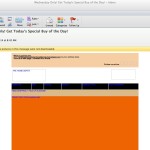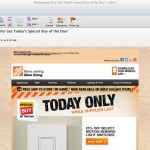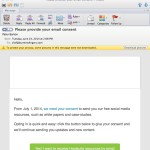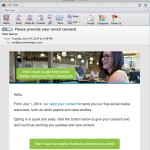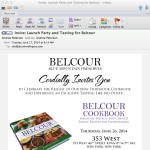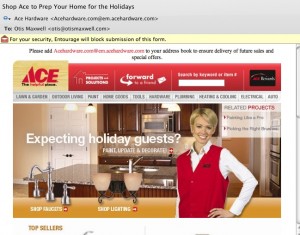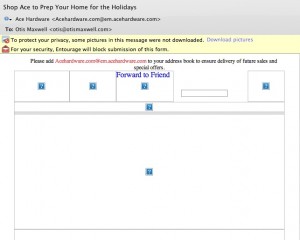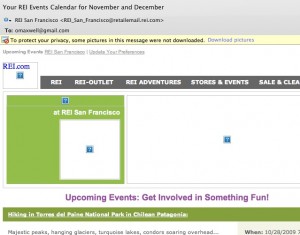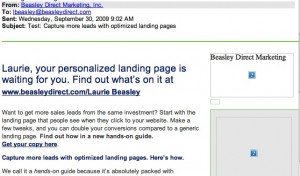Somehow email marketing has become the red headed stepchild of promotion channels. It’s not as pervasive as Facebook, immediate as Twitter or insidious as native advertising. And it’s all too easy to take email for granted and put it on autopilot with a management tool like Eloqua or Pardot. So email gets short shrift in planning meetings and the email marketing manager is often someone who’s expected to handle production rather than make a creative and strategic impact. Am I right?
But email marketing is also the face of your company to people on your email list as well as email inquirers. And if you don’t pay attention to the channel you risk looking like you are clueless or don’t care. I’ve recently moved, which has caused a number of new interactions. Here’s an email from Thermador customer service when I asked about a part for my 25-year old range:
Good Afternoon Mr. Maxwell,
Thank you for taking the time to contact us. We here at Thermador are always more than happy to assist you with your appliance inquiries and we appreciate you allowing us to do so.
Please accept our sincere apology for the delayed response as we are currently experiencing a high volume of email correspondence.
In regards to your inquiry, unfortunately there aren’t any parts available for your unit…
See what I mean? Here’s a potential new customer reaching out to you… sell me an upgraded product! And, while you’re at it, engage with me instead of saying you’ve been too busy to answer my query.
Here’s another. The USPS partners with a company called My Move which makes a number of offers during the process of changing your address. There’s an interstitial page with check boxes for retailers you want offers from, and after you leave there is a second page with more offers. I get it, the second page is for marketers who didn’t pay enough to be on the first page, but there are some really good offers here. $50 off $500 at Amazon! 10% off my next Home Depot purchase! I want this stuff.
But when I try to submit the page, it doesn’t work. I just get the spinning ball in my browser (Safari for Mac… I suspect a compatibility issue). I find a support link for My Move and I write to them and describe the above problem in detail and ask how I can get these offers since the submit button didn’t work. The response:
Hi,
MY MOVE sends your information to the advertisers you selected during your transaction. Fulfillment of specific offers is done by those advertisers and can take anywhere from 48 hours to several weeks depending on the content. For example, a catalog you selected may not arrive for a few weeks, but a coupon that is emailed may arrive in just 2 days. If you need a more specific time frame please contact the advertiser directly. Good luck with your move, and I hope this has helped.
See what I mean? No, it hasn’t helped, since you answered a completely different question than the one I asked. Hopefully Amazon and Home Depot are on a performance contract with My Move, because they are getting exactly zero hits from anyone who is using Safari for Mac. And they can’t be happy about this indifference to a prime target because My Move can’t be bothered to clean up its email automation or pay a human a few dollars to actually read the emails.
UPDATE: Here’s an even better example. I needed a recommendation for a pool & spa service (in my hostile climate, we have to have a “closing” and drain the pipes for winter) and went to Angie’s list. I noticed that one of the reviews had an “F” which was clearly intended from the content to be an “A”. Unlike Yelp, there’s no way to flag a review or give feedback on it so I wrote an email to support using their online form. Here’s the reply; note that has nothing to do with my concern and also contains a number of grammatical errors:
See what I mean? You too, dear reader. Have a great day.
